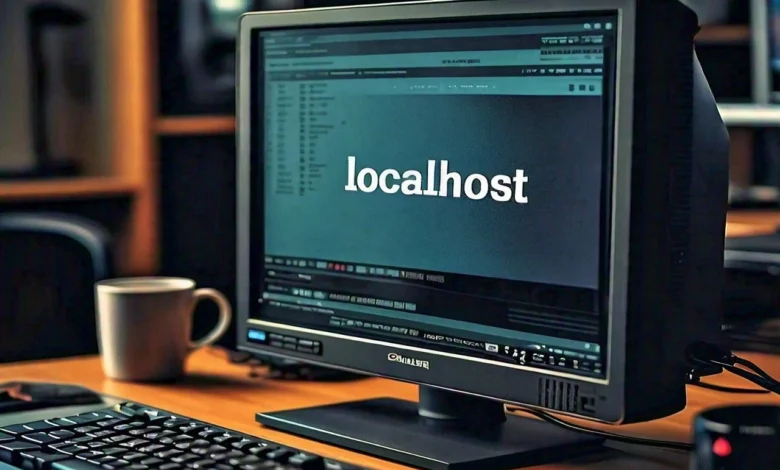
In the vast digital cosmos, there’s a mysterious world right under our fingertips that many of us seldom notice: localhost, specifically 127.0.0.1:62893. This enigmatic address is a gateway to understanding how our computers communicate internally and with the outside world. Buckle up, dear reader, as we embark on a thrilling journey through the quirks and wonders of localhost, peppered with fascinating tidbits and humor to keep things lively.
- What Is 127.0.0.1:62893?
- The Mystery of 127.0.0.1:62893
- The Role of Localhost in Development
- Fun Fact: The History of 127.0.0.1
- How to Use 127.0.0.1:62893 in Your Projects
- Getting Started with Localhost
- Common Pitfalls and How to Avoid Them
- The Future of Localhost
- Fun Fact: Localhost in Pop Culture
- Exploring Advanced Localhost Techniques
- Frequently Asked Questions (FAQs)
What Is 127.0.0.1:62893?
This code consists of two parts:
- 127.0.0.1: This is a special IP address called “localhost”.
- 62893: This is a port number. Ports act like doorways for different applications to send and receive data.
Elaboration:
Localhost, represented by the IP address 127.0.0.1, is a term many have heard but few truly understand. It’s like the Clark Kent of IP addresses—seemingly ordinary but with hidden superpowers. When you type “localhost” into your browser, you’re essentially asking your computer to talk to itself. Sounds a bit narcissistic, right? But there’s more to this self-communication than meets the eye.
Imagine your computer as a bustling city. Localhost is like a cozy coffee shop where the city’s residents (i.e., the various software and services running on your machine) can meet up and chat without the noise and traffic of the outside world. This internal dialogue is crucial for testing and development, allowing programmers to create and refine applications in a controlled environment before unleashing them onto the global stage.
The Mystery of 127.0.0.1:62893
So, what’s the deal with 127.0.0.1:62893? To unravel this, we need to delve into the world of ports. Think of an IP address as a hotel, and ports as the rooms within that hotel. Each room has a unique number, and each number can host a different service. The port number 62893 is just one of many possible “rooms” where a service might be running on your localhost.
When you see 127.0.0.1:62893, it’s like being handed a key to room 62893 in the Hotel Localhost. What’s inside? It could be anything from a web server to a database, or even a custom application you’re developing. The possibilities are endless, and exploring these rooms can be both exciting and enlightening.
The Role of Localhost in Development
For developers, localhost is like a personal laboratory. Here, they can concoct their digital potions without worrying about external influences. This safe space allows them to:
- Test new features: Before releasing a new feature, developers can run it on localhost to ensure it works as intended.
- Debug issues: When something goes wrong, localhost provides a controlled environment to diagnose and fix problems.
- Develop offline: No internet? No problem! Localhost lets you work on your projects without needing an active connection.
But it’s not just about practicality. Localhost fosters creativity by providing a sandbox where developers can experiment without fear. It’s the digital equivalent of a blank canvas, ready to be transformed into a masterpiece.
Fun Fact: The History of 127.0.0.1
Why 127.0.0.1, you ask? The history behind this address is as intriguing as a good detective novel. The “127” part comes from the fact that it’s part of the loopback range defined by the Internet Engineering Task Force (IETF). This range was designated to allow machines to refer to themselves. The “.1” at the end signifies the first (and usually only) address in this range used for localhost.
The choice of 127.0.0.1 is partly due to technical reasons and partly due to historical context. It’s the highest-numbered network in the old class A range, meaning it was chosen because it would be less likely to interfere with other network assignments. Plus, it’s short and sweet—easy to remember and type.
How to Use 127.0.0.1:62893 in Your Projects
Alright, enough history. Let’s get practical. How can you leverage 127.0.0.1:62893 in your projects? Here are a few scenarios where this localhost address might come in handy:
- Running a Local Server: If you’re developing a web application, you can run a local server on 127.0.0.1:62893 to test your site before deploying it live. This lets you catch any issues and make adjustments in a controlled environment.
- Database Development: Many developers use localhost to run local instances of databases like MySQL or MongoDB. Connecting to these databases via 127.0.0.1:62893 ensures that your data operations are secure and isolated.
- API Testing: If you’re working with APIs, running them on localhost allows you to test requests and responses without external factors. This is particularly useful for debugging and ensuring your API functions correctly.
Getting Started with Localhost
Ready to dive in? Here’s a step-by-step guide to getting started with 127.0.0.1:62893:
- Set Up Your Environment: Install the necessary software for your project. This might include a web server (like Apache or Nginx), a database (like MySQL), and any other tools you need.
- Configure Your Server: Modify the configuration files to run your server on 127.0.0.1:62893. This usually involves setting the IP address and port number in the server’s configuration file.
- Start Your Server: Launch your server and navigate to 127.0.0.1:62893 in your browser. If everything is set up correctly, you should see your application running.
- Test and Iterate: Use this local environment to test your application, debug issues, and make improvements. Iterate on your design until you’re satisfied with the result.
Common Pitfalls and How to Avoid Them
While localhost is a powerful tool, it’s not without its quirks. Here are some common pitfalls and tips to avoid them:
- Port Conflicts: Sometimes, multiple services try to use the same port. This can lead to conflicts and errors. Make sure to assign unique ports for different services.
- Firewall Issues: Your firewall settings might block certain ports, preventing your server from running correctly. Adjust your firewall settings to allow traffic on the necessary ports.
- Environment Differences: Local environments can differ from production environments. Ensure your local setup mirrors your production setup as closely as possible to avoid unexpected issues.
The Future of Localhost
As technology evolves, so does the role of localhost. With the rise of cloud computing and containerization, the way developers use localhost is changing. Tools like Docker allow for more complex and isolated local environments, while cloud-based development environments offer new possibilities for remote collaboration.
Despite these advancements, localhost remains a fundamental part of the development process. Its simplicity, reliability, and versatility make it an indispensable tool for developers worldwide.
Fun Fact: Localhost in Pop Culture
Localhost has even made its way into pop culture! In the 2015 film “The Martian,” astronaut Mark Watney uses 127.0.0.1 to communicate with NASA, highlighting the importance and ubiquity of this address. It’s a fun nod to the tech-savvy audience and a reminder of localhost’s place in our digital lives.
Exploring Advanced Localhost Techniques
For those looking to push the boundaries, there are advanced techniques to explore with localhost. Here are a few:
- Virtual Hosts: Set up virtual hosts to run multiple sites on different ports or subdomains within your localhost environment.
- SSL/TLS: Implement SSL/TLS certificates for secure communication over localhost. This is particularly useful for testing HTTPS sites.
- Reverse Proxies: Use reverse proxies to manage and distribute traffic between different services running on localhost.
Conclusion
127.0.0.1:62893 is more than just a string of numbers—it’s a gateway to understanding the inner workings of your computer and a vital tool for development. Whether you’re a seasoned developer or a curious newbie, exploring localhost can unlock new levels of productivity and creativity.
Understanding how to leverage localhost for your projects can revolutionize your workflow. It provides a safe and controlled environment to experiment, debug, and refine your applications before they face the real world. The versatility of localhost allows it to adapt to various development needs, from running local servers and databases to testing APIs and securing communications.
So next time you see 127.0.0.1:62893, remember: it’s not just an address. It’s a whole world waiting to be discovered. Dive in, experiment, and most importantly, have fun!
We hope you found this article helpful. If you did, be sure to check out our blog for more great content like this.
Frequently Asked Questions (FAQs)
What is a Localhost?
A localhost refers to the computer or device you are currently using to access a network or the internet. In computing, “localhost” is often used to refer to the IP address 127.0.0.1, which is the standard loopback address in Internet Protocol (IP) networking.
Is Localhost safe?
Yes, localhost is generally considered safe for several reasons: Isolation, Testing Environment, Limited Exposure, Security Measures, etc.





